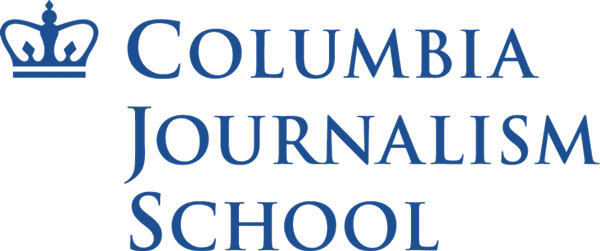
As the author and graphic novelist Arie Kaplan put finishing touches on his visual props and notes for his virtual lecture “From Krakow to Krypton: Jews, Justice, and Comic Books” on April 12, roughly 200 attendees tuned in to learn about the distinctly Jewish history of comic books – and how those comics impact culture today.
Addressing comic book creators and their corresponding characters, Kaplan, who practices Reform Judaism, said this genre of storytelling exudes an undeniable Jewish sensibility and morality. Superman, Batman, the Fantastic Four, the Avengers and the X-Men were created by Jewish minds, Kaplan said. According to the Harvard Divinity Bulletin, Jewish people produced the first comic book, the first graphic novel and the first comic bookstore. The first and second-generation Jewish Americans behind the drawings were not only the publishers but also the artists, the writers and illustrators who breathed life into this budding industry.
At first, this nearly homogenous field of Jewish creators was no coincidence, Kaplan said. The origin is also, he added, no fairy tale. Comic books emerged partially due to anti-Semitic and anti-immigrant sentiment. Since daily newspapers refused to accept illustrations from Jewish artists, Jewish creatives looked outside of mainstream outlets.
“In 1938, the Jewish creators of Superman, Joe Shuster and Jerry Siegel, had been rejected from the higher-paying advertising field and were still living at their parents’ homes,” Kaplan said. “So, it was comic books for them.”
The lecture was presented by The Workers Circle, a Manhattan-based American Jewish nonprofit promoting social justice and Jewish education. With this lecture, The Workers Circle aimed to contextualize the breadth of the Jewish immigrant and American experience, said its CEO Ann Toback.
“The United States is a stronger society because of the many immigrant experiences that have historically contributed — and continue to contribute — to its diversity,” Toback said. “It’s eye-opening to understand just how much of the pop culture we enjoy is the result of immigrant contributions. It’s also notable to see that our culture reflects overcoming obstacles.”
In their DNA and realization, comics are a response to economic hardship, war and oppression, Kaplan said during the hour-long lecture. As an example, Superman’s name, Kal-El, is Jewish, as it is a Hebrew name meaning “all of God.” Kaplan, who has interviewed comic icons such as Stan Lee, Jack Kirby and Art Spiegelman, said the storylines of comic books tend to center on a good-versus-evil conflict.
“Wishing for someone to help us is a potent power fantasy,” Kaplan said. “We’ve had these fantasies for millennia as part of religion, especially in Judaism.”
Comic books influence the self-esteem and character development of their young audience, said Kaplan, who has written children’s books for Penguin Random House.
“Comic book characters made me feel seen as a kid because I was a very lonely kid,” he added. “I don’t think it’s an accident that a lot of my favorite characters were neurotic, sickly, short and skinny like I was.”
Identity in comic books for Zach, an eight-year-old from the Upper West Side, extends beyond religious affiliation and into sharing a common home base with his fictional role models. The headquarters of the Fantastic Four, the Avengers, the Defenders, the New Warriors and the Midnight Sons are located within the city, and major heroes like Spider-Man, Daredevil, Jessica Jones, Moon Knight and Doctor Strange also operate in one of the five boroughs. Zach, who has been a superhero fan since he was five, has seen every Marvel movie. Zach’s favorite superhero, Spider-Man, is from Queens (his parent asked that Zach’s last name not be published for privacy reasons).
“Well, Spider-Man has to have the city’s tall buildings to swing from to be Spider-Man,” Zach said.
In 1943, 95% of children aged 8 to 11 were regular comic book readers. Now, extending beyond the page, audiences of all ages consume superhero content. Over half of American adults aged 18 to 34 have seen at least one of the films from Marvel’s ‘The Avengers’ series. Four of the top 10 highest-grossing movies of all time come from the Marvel Cinematic Universe (MCU).
From the silver screen to personal streaming, Marvel Entertainment is a subsidiary of entertainment industry conglomerate The Walt Disney Company. Currently being released as a Marvel miniseries on Disney+, Moon Knight contains a character called Marc Spector who, after much backlash and accusations about the erasure of the Jewish aspects of the comics, will be revealed as explicitly Jewish by the end of the series. The producers also consulted a Judaism expert for accuracy.
On March 19, Raven Karlick, a sophomore at Purchase College and a humanistic Jewish comic book fan tweeted, “this whole Moon Knight situation continued to prove to me that MCU fandoms have never been safe for Jewish people, or really any marginalized group.”
Karlick, 20, said they have dealt with anti-Semitism in comic communities. There should have been more Jewish Moon Knight writers, Karlick maintained in an interview with NY City Lens. However, in a response to Karlick’s statement on Twitter, Moon Knight lead director Mohamed Diab said that the protagonist of Marc Spector will be Jewish, viewers simply need to “wait until the end of the show.”
As indicated by numerous studies, representation is important. When it comes to comic media, seeing elements of one’s identity in a superhero is psychologically developmental. Still, blockbuster superhero movie adaptations, despite having been widely ideated by Jewish creativity, lack adequate Jewish representation, Karlick said. Intentionally or unintentionally, they added, MCU creators and fans have limited the Jewishness inherent to comic books.
“As is evident in their Jewish history, superheroes bring hope,” Karlick said. “Marginalized communities are not safe in comic communities anymore. It’s just sad because, you know, the original purpose was to uplift marginalized Jewish voices.”
About the author(s)
Covering Manhattan for NY City Lens, Riley is a multimedia journalist who worked previously as an intern for The New York Times, an editor for Odyssey, a reporter for D Magazine, and a radio news talk show host.



